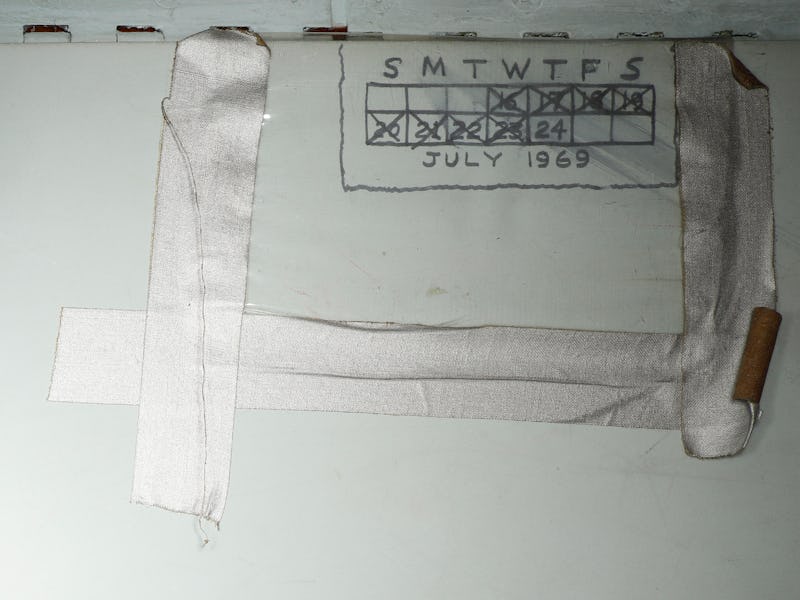Apollo 11 Wall Writings Reveal First-Ever Human Space Calendar
One small writing for man.

As part of a project to create an exact 3D map of the Apollo 11 Command Module, scientists with the Smithsonian Institution just released a series of previously unseen images detailing the capsule’s interior. Among the many delightful signs that humans lived here is what seems to be the first wall calendar ever made in space.
After the command module landed in the Pacific Ocean on July 24, 1969, few people were allowed to see the inside. NASA sent the spacecraft off to the National Air and Space Museum in Washington, D.C. the following year, and it’s almost exclusively sat there, preserved, ever since.
Now, Smithsonian researchers are making high-resolution digital scans of everything inside — including some never-before seen markings on the wall, desk diaries, computerized charts, and more.
Among the most interesting nuggets is a two-week calendar scribbled on the side that counts of the eight days of Apollo 11 and its crew, running from July 16 to July 24.
The eight-day calendar, up close.
Only three people could have drawn it, of course: Neil Armstrong, Buzz Aldrin, or Michael Collins. Museum curator Allan Needell told the BBC he suspects it was probably Collins — a sentiment shared by Aldrin.
Marking the passage of time is something even the earliest humans did, making calendars an anthropological institution. To see humans carry forward an ancient tradition, thousands of miles into the cold vacuum of outer space, is pretty incredible. No matter where we go, there are some human behaviors we’re never going to let go of.